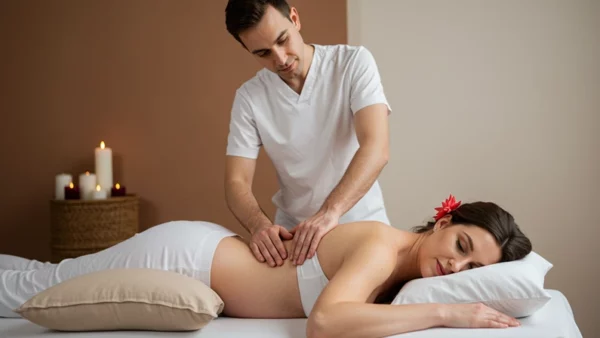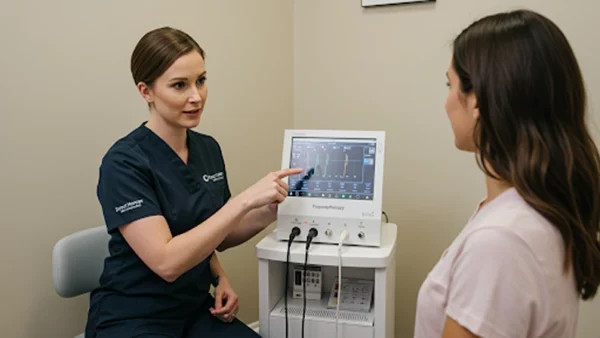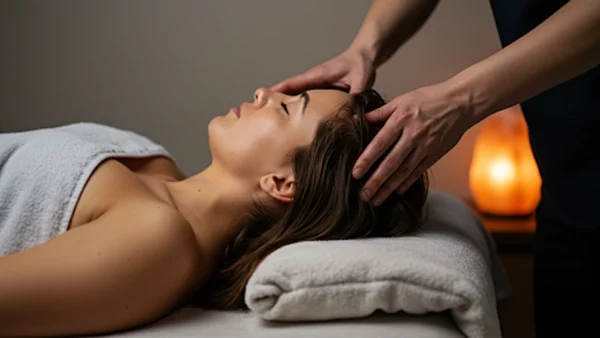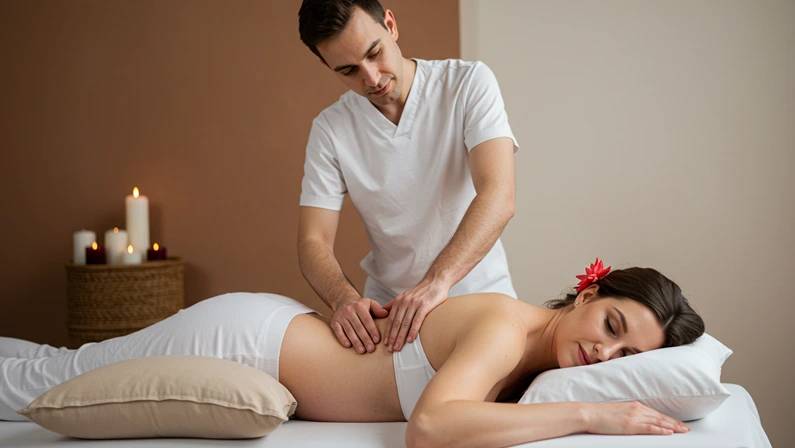In today’s fast-paced world, stress has become a common issue affecting millions of people. According to the Australian Psychological Society, stress levels have risen in recent years, leading to various physical and mental health concerns. If you’ve ever felt overwhelmed, struggled with sleep, or experienced persistent tension, relaxation massage might be the solution you need.
Relaxation massage is designed to ease stress, promote relaxation, and improve overall wellbeing. Unlike deep tissue or remedial massage, its primary focus is to provide a soothing experience that calms the nervous system and rejuvenates the body. This guide covers everything you need to know about relaxation massage, including its techniques, benefits, and how it compares to other massage types. Discover how a relaxation massage for stress relief can help ease tension, improve sleep, and enhance your overall well-being with this in-depth guide. By the end, you’ll have all the information needed to decide if it’s the right addition to your self-care routine.
What is Relaxation Massage?

Relaxation massage is a gentle and rhythmic style of bodywork that incorporates smooth, flowing strokes to ease stress and encourage a deep sense of calm. Unlike remedial or deep tissue massage, which focus on specific muscle problems, relaxation massage is designed primarily for overall relaxation and mental relief. It helps slow the heart rate, reduce cortisol levels, and promote a state of tranquility, making it an excellent choice for those looking to unwind.
This massage style has its foundation in Swedish massage, a widely practiced technique that uses light to medium pressure along with long, gliding movements. The strokes used in relaxation massage help improve circulation, soothe the nervous system, and enhance overall well-being. Many people choose relaxation massage as a way to counteract daily stress and foster a greater sense of balance in their lives.
Common Techniques Used in Relaxation Massage
- Effleurage: Long, sweeping strokes to warm up muscles and improve circulation.
- Petrissage: Kneading and rolling movements to release tension.
- Friction: Small, circular motions to enhance blood flow and relaxation.
- Tapotement: Gentle tapping to invigorate the skin and muscles.
- Vibration/Shaking: Light movements that help loosen tight areas and deepen relaxation.
Key Benefits of Relaxation Massage
1. Stress Relief and Tension Reduction
Massage therapy has been scientifically proven to reduce cortisol, the stress hormone, leading to an immediate sense of calm. Studies show that regular relaxation massages can lower anxiety levels, decrease muscle tension, and help the body enter a parasympathetic state, which is essential for stress recovery.
2. Improved Sleep Quality
Massage therapy has been scientifically proven to reduce cortisol, the stress hormone, leading to an immediate sense of calm. Studies show that regular relaxation massages can lower anxiety levels, decrease muscle tension, and help the body enter a parasympathetic state, which is essential for stress recovery.
3. Enhanced Mood and Mental Wellbeing
Massage encourages the release of endorphins, serotonin, and dopamine—neurotransmitters responsible for happiness and relaxation. People suffering from anxiety or mild depression often report feeling significantly better after a massage session, making it a valuable addition to mental health self-care routines.
4. Physical Benefits Beyond Relaxation
- Improved circulation, leading to better oxygen and nutrient delivery to muscles.
- Reduced muscle tension, easing minor aches and discomfort.
- Enhanced immune function, as massage stimulates lymphatic flow.
- Potential impact on blood pressure, as relaxation helps regulate cardiovascular function.
Relaxation Massage vs Other Massage Types
| Feature | Relaxation Massage | Remedial Massage |
| Purpose | Stress relief, relaxation | Targeted pain relief, injury recovery |
| Pressure | Light to medium | Medium to deep |
| Techniques | Smooth, flowing strokes | Trigger point therapy, deep tissue work |
| Best for | General relaxation, reducing stress | Treating specific injuries or chronic pain |
Relaxation Massage vs Deep Tissue Massage
- Pressure Differences: Relaxation massage uses lighter pressure, while deep tissue massage applies firm pressure to reach deeper muscle layers.
- Pain Levels: Deep tissue massage may cause mild discomfort, while relaxation massage is designed to be soothing.
- Results Expectations: Deep tissue massage targets pain relief, while relaxation massage focuses on stress reduction and mental relaxation.
Who Should Consider Relaxation Massage?

Relaxation massage is ideal for anyone looking to reduce stress, improve sleep, and enhance overall well-being. It is especially beneficial for individuals experiencing high levels of daily stress, those struggling with anxiety, and people who have difficulty unwinding. If you find yourself feeling mentally or physically exhausted, a relaxation massage can help restore balance by calming the nervous system and releasing built-up tension.
This type of massage is also a great choice for beginners who are new to massage therapy, as it provides a gentle and soothing experience without the intensity of deep tissue or remedial techniques. Additionally, those who suffer from mild tension headaches, fatigue, or poor circulation may benefit from the increased blood flow and relaxation that this therapy provides. Whether you need a moment of peace or want to incorporate relaxation into your self-care routine, a relaxation massage can be a valuable tool for maintaining both mental and physical health.
Ideal Candidates for Relaxation Massage
- People experiencing high stress levels.
- Those struggling with sleep disturbances.
- Individuals new to massage therapy.
- Anyone looking for preventative wellness care.
When to Choose Other Massage Types Instead
- If you have a specific injury requiring focused treatment.
- If you need chronic pain management strategies.
- If you are an athlete needing sports performance enhancement.
Maximising the Benefits of Your Relaxation Massage

To get the most out of your relaxation massage, it’s important to prepare before your session, stay mindful during the treatment, and take care of your body afterward. Drinking water, avoiding caffeine, and arriving in a calm state can enhance the experience. During the massage, focus on deep breathing and communicate any preferences to your therapist. Afterward, continue hydrating, rest if needed, and avoid strenuous activities to prolong the relaxing effects. Making relaxation massage a regular part of your wellness routine can help maintain reduced stress levels and overall well-being.
1. Before Your Session
- Drink at least one glass of water an hour before your session.
- Avoid heavy meals and caffeine before the massage.
- Wear comfortable, loose-fitting clothing.
- Take a few deep breaths to mentally prepare for relaxation.
2. During Your Massage
- Focus on deep breathing to enhance relaxation.
- Communicate with your therapist about pressure preferences.
- Practice mindfulness by focusing on the massage sensations.
3. After Your Massage
- Continue drinking water to help flush out toxins.
- Avoid strenuous activities immediately after the session.
- Incorporate regular massages into your wellness routine.
Finding the Right Massage Therapist in Australia
Choosing the right massage therapist in Australia ensures a safe and effective relaxation experience. Checking client reviews, asking about their experience with prenatal or remedial massage, and discussing your specific needs beforehand can help you find a therapist who suits your preferences. A skilled therapist will create a calming environment, use appropriate techniques suited to your condition, and tailor the session to enhance your overall well-being. Additionally, ensure they follow hygiene protocols and use high-quality massage oils or lotions suitable for sensitive skin to maximize comfort and effectiveness.
Qualifications to Look For
- Ensure the therapist is certified by an Australian massage association.
- Ask about their experience and specialisation.
- Look for client reviews and testimonials.
What to Expect During Your First Visit
- Initial intake form discussing your needs and health history.
- A calming environment with soft lighting and relaxing music.
- A session typically lasting 60 to 90 minutes.
Frequently Asked Questions
How long does a relaxation massage typically last?
Most relaxation massage sessions last between 60 and 90 minutes, providing ample time for both physical and mental relaxation. A one-hour session is great for a quick reset, while a 90-minute session allows for deeper relaxation and more thorough tension relief. Some spas also offer shorter 30-minute sessions, but these may not provide the same level of benefit as a full-length treatment.
How often should I get a relaxation massage?
The ideal frequency of relaxation massage depends on your stress levels and personal wellness goals. For general stress relief and relaxation, a session once a month can be beneficial. However, if you experience chronic stress, anxiety, or muscle tension, weekly or biweekly sessions may be more effective. Regular massages can help maintain a consistent sense of relaxation and improve overall well-being over time.
Can relaxation massage help with specific health conditions?
While relaxation massage is primarily designed to reduce stress, it may also provide relief for mild muscle pain, circulation issues, and sleep disturbances. It can improve blood flow, which helps deliver oxygen and nutrients to muscles, promoting faster recovery. Additionally, relaxation massage can help regulate the nervous system, making it beneficial for people who suffer from tension headaches, mild anxiety, and fatigue.
What’s the difference between Swedish massage and relaxation massage?
Swedish massage and relaxation massage share similarities, but they are not the same. Swedish massage includes a combination of long strokes, kneading, and deep pressure techniques that can target specific muscle areas. In contrast, relaxation massage focuses solely on gentle, flowing movements designed to calm the mind and body. While Swedish massage can be both therapeutic and relaxing, relaxation massage is primarily intended for stress relief rather than muscle therapy.
Is relaxation massage covered by private health insurance in Australia?
Some private health insurance providers in Australia offer coverage for relaxation massage under wellness or complementary therapy plans. However, coverage varies depending on the insurer and the specific policy you have. In most cases, a rebate is only available if the massage is performed by a qualified therapist registered with a professional association. It’s always best to check with your insurance provider to confirm your eligibility and the amount you can claim.
Experience the Benefits of Relaxation Massage
Relaxation massage is more than just a luxury—it’s an effective way to manage stress, improve sleep, and enhance overall wellbeing. By easing muscle tension and promoting circulation, it helps create a sense of balance and calm that lasts beyond the session. If you’re looking to experience these benefits firsthand, booking a session with a qualified therapist can be a great step toward a healthier, more relaxed life. Experience the calming effects of a professional relaxation massage designed to reduce stress, ease muscle tension, and improve your overall well-being. A professional can tailor the experience to your needs, ensuring that you get the most out of each massage.

